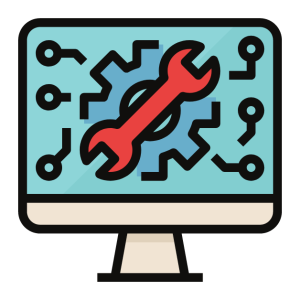What Is Model Context Protocol (MCP)?
Model Context Protocol (MCP) is a framework for structuring product data and its contextual relationships so AI agents—like ChatGPT, Amazon Rufus, or Google Gemini—can interpret...
Published: Oct 28, 2024 Updated: Jul 3, 2025
When looking at the best PIM systems, you want one that fits your specific business requirements. It’s also important to consider your future goals to ensure your chosen solution will help you achieve and exceed them. The two main types of Product Information Management (PIM) solutions out there are Software as a Service (SaaS) PIM and Open-Source PIM.
While both enable you to efficiently manage your product content and ensure data quality, there are some distinct differences. We’ll outline these differences in this blog to help you make the right choice, so read on!
Open-source systems are released under a license, and the copyright holder will then give users the ability to use, amend, and distribute the source code. Often, the source code will be publicly available online, meaning users can tailor it to meet their specific business requirements. Overall, open-source PIM systems will streamline the way you manage product data, just like any other PIM platform. Let’s now explore the pros and cons of open-source PIM
:

To sum up, there are several benefits of using product information management open-source software. However, you also need to be aware of the drawbacks, as well as the available alternatives.
A SaaS PIM application’s source code is closed and is often a ready-made solution that’s instantly ready to get up and running. It’s a subscription-based model, so customers have ongoing access to training and support from a dedicated team of PIM experts. The implementation process is flexible and will often be tailored to work around your setup to ensure business continuity. Because there’s a dedicated team of developers working on SaaS PIM solutions, there’ll be frequent updates and improvements that you’ll benefit from. 
This was a brief overview of product information management SaaS solutions. Let’s look at an open-source vs SaaS PIM comparison.
To begin, open-source PIMs are generally more flexible and customizable. It enables companies to tailor solutions to their needs. Having said that, open-source PIMs often require more upfront investment. They also have significant maintenance needs.
SaaS PIMs, on the other hand, are usually more cost-effective and scalable solutions. Customers can also get updates and support with SaaS PIMs. Sometimes, they may have limitations in terms of customization. On the flip side, they are generally easier to implement and maintain. Ultimately, the choice between the two depends on a business’s specific requirements, budget, and technical capabilities.
The implementation methodology for open-source and SaaS PIM systems, as mentioned above, differs on several fronts. Open-source PIMs are usually more complex and time-consuming to implement. They require in-house technical expertise for installation, use, management, and customization. This can be a challenge for companies who don’t have enough IT resources.
SaaS PIMs, on the other hand, are often cloud-based, which means they can be implemented with other systems and tools (relatively) quickly and easily. SaaS PIM providers typically offer pre-configured solutions and support throughout the implementation process.
Moving on, open-source PIMs typically have a lower upfront cost. This is because the software itself is free. However, businesses may have to pay for hardware, software licenses, and maintenance. SaaS PIMs, on the other hand, often have a monthly or annual subscription-based pricing. This may increase the cost but removes the need for an upfront fee. This makes for easy budgeting and forecasting. Not to mention, SaaS providers often include support and maintenance as part of the subscription fee.
Both open-source and SaaS PIM systems offer product data management capabilities, but their approach differs. Open-source PIMs provide flexibility and customization. It helps companies tailor their PDM solutions to actual requirements. This can be beneficial for organizations with complex product hierarchies or unique data management needs. However, it may require more technical expertise and maintenance.
SaaS PIMs, on the other hand, often have pre-built PDM features and workflows. This makes them easier to implement and use. They may have limitations in terms of customization. However, they can still handle most common PDM tasks efficiently. SaaS providers often offer features such as product categorization, attribute management, and data enrichment. In the end, it makes it easier for businesses to manage and maintain product information.
It depends. Open-source PIM is flexible and customizable. SaaS is easy to implement, scalable, but may have limitations in customization. For most retail and eCommerce businesses, SaaS PIM is a good choice due to its simplicity and scalability. However, if you need high customization or have strong IT resources, open-source may be suitable.
Open-source PIMs often provide greater flexibility and customization when it comes to syndication. You can configure the system to meet your specific syndication needs, including custom data feeds, mapping rules, and automation. SaaS PIMs typically offer pre-built syndication features and integrations with popular marketplaces and channels. This can make it easier to set up and manage syndication, especially for businesses that are new to the process. However, you may have less flexibility in terms of customization.
Whether you opt for SaaS-based PIM or open-source PIM, there are some key considerations you’ll have to think about.
Firstly, how quickly do you want to get your PIM project up and running? The sooner you’re set-up, the sooner you’ll be able to start listing online. If this is the case, and if you lack a dedicated dev team, your best option would be a SaaS solution.
Secondly, how much do you want to invest? While open-source software is usually free, there’s an inherent long-term cost that’s higher than SaaS. Consider the technical resources and hardware you’ll to run the software and host the infrastructure.
In addition, as your eCommerce operations grow, you’ll have increased traffic on your LAN/WAN network. To deliver the best possible customer experience, you’ll need to ensure you’re updating on a regular basis so your site speed isn’t slowed.
SaaS PIM offers amazing value because it doesn’t come with any additional fees. Maintenance, integration, and hardware costs are all included in the initial purchase. Upgrades are also released instantly, ensuring you get the most up-to-date version of the software.
SaaS PIM is a super efficient data management tool that provides great potential for eCommerce growth as it makes it easy to sell across multiple channels and geographies. Overall, it’s a system that gives you the freedom to be creative with your product data which will contribute to more sales. In that regard, the benefits of SaaS PIM are truly limitless.


